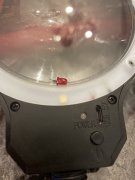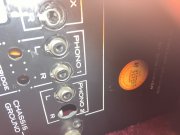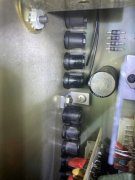Marco,
Lots of comments and questions from your (3) posts. It will take a while to reply to them all.
I took a look at my (2) 4000 series 1 (Lynnwood Washington) owner's manuals and indeed they incorporated the comments about the "extra long connectors". However, I didn't see anything about the "UTILIZATION OF THE TAPE MONITOR PATH FOR AUXILIARY EQUIPMENT" as is noted in my previous post. The list of manufacturer's and models under "cartridge loading adjustments" is more extensive in the addendum (noted in my previous post) than Phase Linear had in the subsequent owner's manuals.
Yes Phase Linear had problems with the RCA jacks in the 4000 series 1 preamp as well as the 2000's. By the time of the series 2's they used a different type of RCA jack which had a plastic body and which was also secured with a screw on the back of the chassis. The 4000's that I have seen people add RCA jacks by mounting them to the back panel tend to be a bit ugly. Also a bit harder to service down the road. The original jacks also had shorting capability when not in use. If my memory serves me correct if you take a look at the jacks and the circuit board traces and you will see the inputs have a shorting capability when not in use. The tape 1, tape 2, main and auxiliary outputs do not.
Phase Linear also used (2) different models of RCA jacks. One has a round hump. The other is square.
So how might mounting RCA jacks (like a Switchcraft 3501FR?) directly to the rear panel affect the performance of the preamp? Could there potentially be some ground loop issues if the jacks aren't isolated (say with fibre washers)? Is there enough clearance between the center distance of the holes for any style of RCA jack? Without the shorting capability (or using a male shorting plug) could there be an increase in the signal-to-noise ratio, crosstalk or RFI? I don't know all the answers.
By the way, I have approximately 100 new old stock original RCA jacks. So I am good to go for a while.



